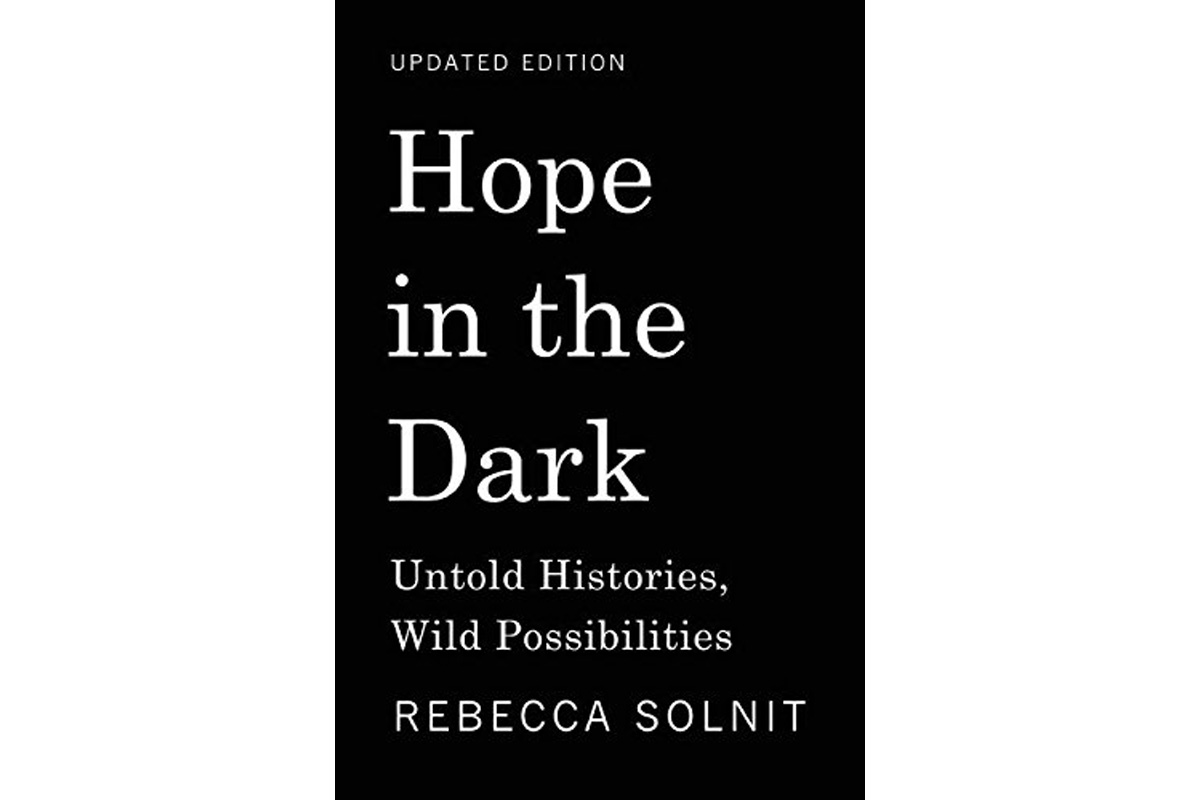Author Rebecca Solnit’s Book Offers Optimism in Dire Times
Hope in the Dark: Untold Histories, Wild Possibilities Reminds That Social Change Takes Circuitous Routes

For many Americans, 2017 will go down as a trying, stressful, and perplexing year, one dominated by the electoral college victory of Donald J. Trump, destructive hurricanes on the Gulf Coast and in the Caribbean, massive wildfires in California, a massacre in Las Vegas, and a rhetorical war with North Korea. Like many others, 2017 has left me gloomy, depressed, and anything but hopeful for the near future.
Around the first anniversary of Trump’s election win I began reading the third edition of Rebecca Solnit’s slender classic, Hope in the Dark: Untold Histories, Wild Possibilities, a book that had been on my reading list for several months. Solnit writes in a language I understand intellectually and emotionally, and she reminded me that social change often takes a circuitous route, moving so imperceptibly that we hardly see it coming because we’re in the process of living it. Pointing to recent history to bolster her argument, Solnit recounts how thousands of activists the world over, mobilizing and connecting with technology and shared values, shut down meetings of the World Trade Organization, stood like a cement wall against giant corporations such as Monsanto, and stymied energy extractors.
Clear-eyed and razor sharp in her analysis, Solnit knows from her own experience that political activism is for the stout of heart, the patient, and the resilient. The complete collapse and overnight toppling of a government or system of injustice rarely happens unless there are antecedents, years of organized protest and activism; social movements often develop and grow out of sight, nurtured by thousands of small actions that nudge change from the edges to the center.
As in the two previous editions, Solnit is preoccupied with climate change and the dislocations in store if we continue our stubborn fealty to the status quo. For her, climate change is the singular threat that provides a tent large enough to house all other social justice movements. Erecting such a structure requires imagination; daring; courage; solidarity across lines of race, class, gender, ethnicity and nationality; and an understanding that progress rather than perfection is the goal.
Hope in the Dark is like an energy drink for activists, a tonic against despair and resignation and defeatism. For sure the road is long and mostly uphill, and it twists and meanders and sometimes seems to go nowhere, though it’s precisely at that point where the breadth and depth of our political imagination — and hope — comes into play. As Solnit notes, “Hopefulness is risky, since it is after all a form of trust, trust in the unknown and the possible, even in discontinuity.”



